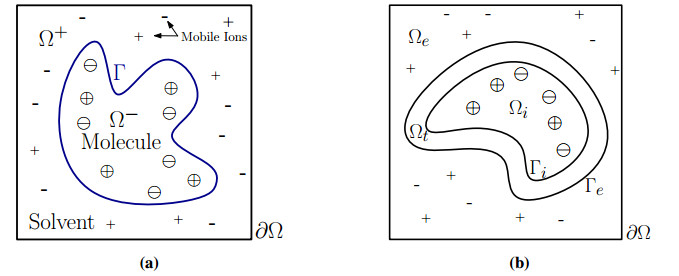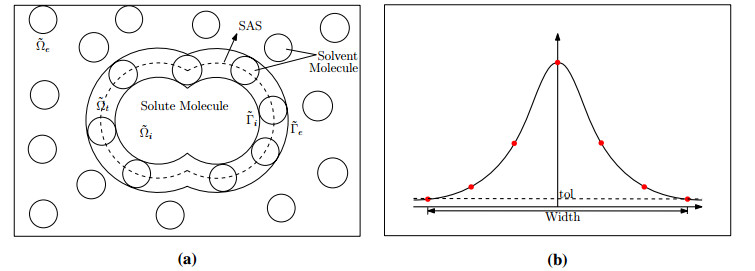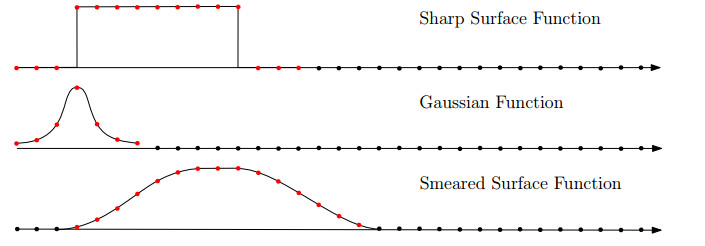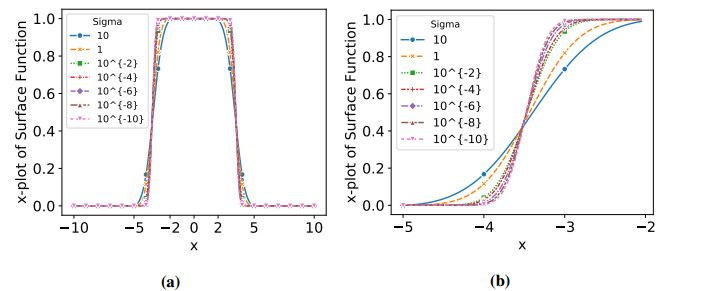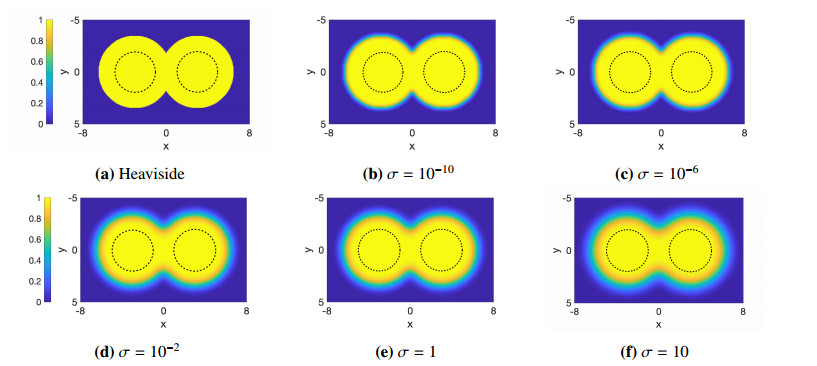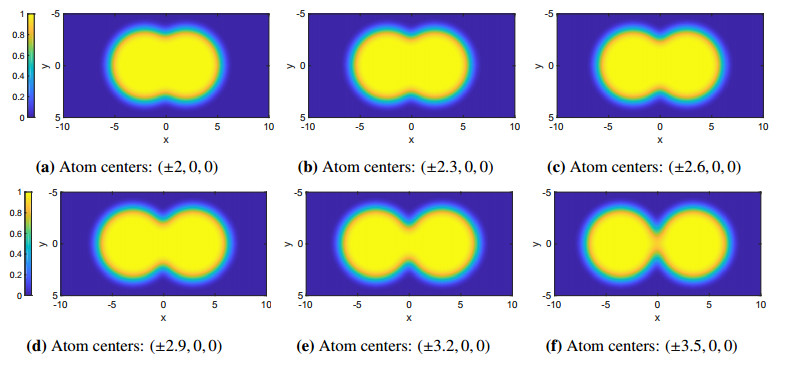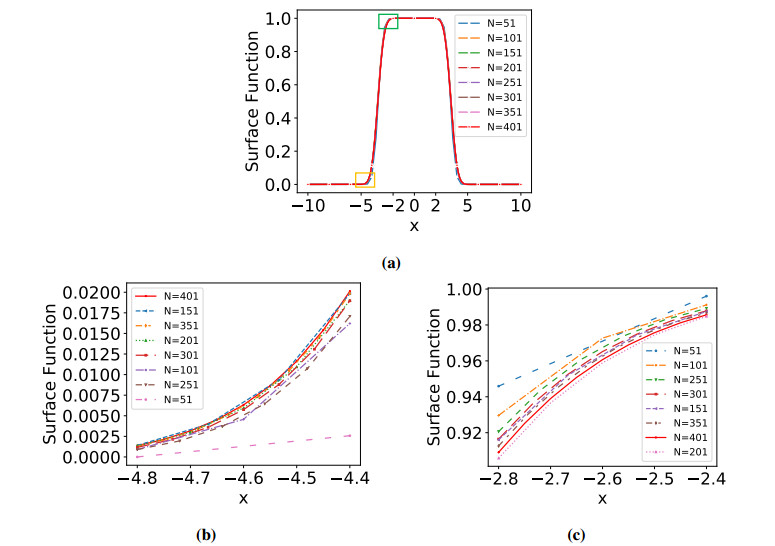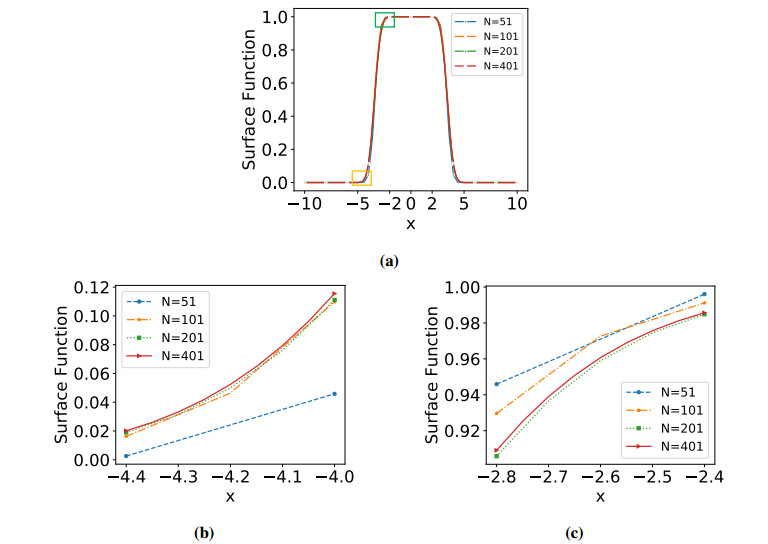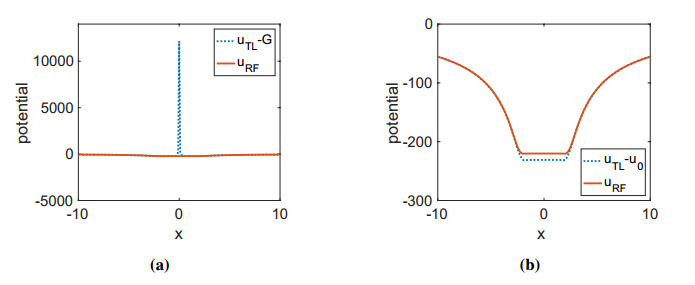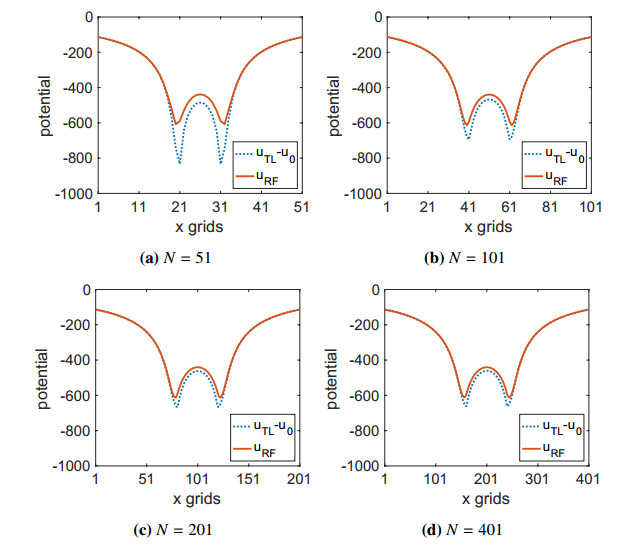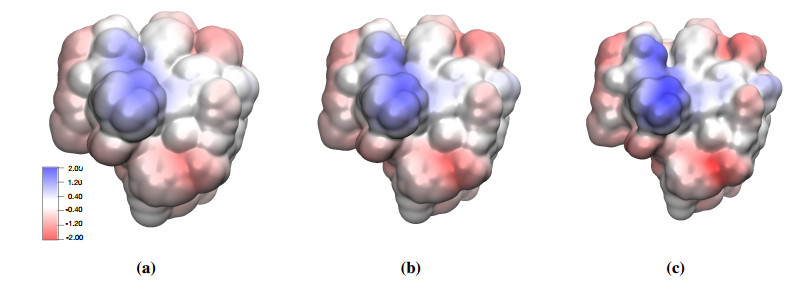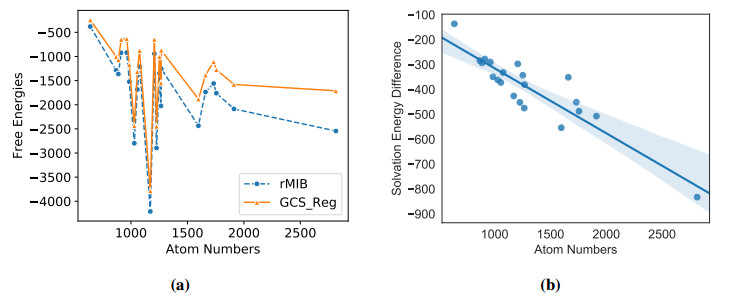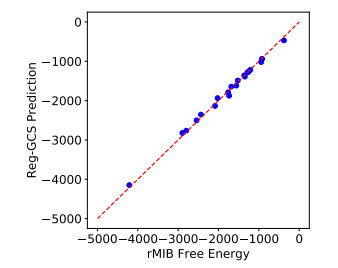1.
Introduction
Lots of physical phenomena can be expressed by the FC equation, including, inter alia, dissipative and dispersive partial differential equations (PDEs). In this paper, we consider the FC equation
where μ0∈R,0 <α1,α2<1 are constants. There are some definitions of fractional derivatives, such as the Caputo type, Riemann-Liouville type and so on. In the following, we adopt the Caputo type time fractional-order partial derivative as
and Γ(α) is the Γ function.
In [1], a scheme combining the finite difference method in the time direction and a spectral method in the space direction was proposed. In [2], two implicit compact difference schemes for the FC equation were studied, this scheme was proved to be stable, and the convergence order O(τ+h4) was given. In [3], a two-dimensional FC equation was solved by orthogonal spline collocation (OSC) methods for space discretization and finite difference method for time, which was proved to be unconditionally stable. In[4], the FC equation with two time Riemann-Liouville derivatives was solved by an explicit numerical method; and the accuracy, stability and convergence of this method were studied. In [5], FC equation with two fractional time derivatives were considered, and two new implicit numerical methods for the FC equation were proposed, respectively. The stability and convergence of these methods were also investigated. In [6], nonlinear FC equation was solved by a two-grid algorithm with the finite element (FE) method. A time second-order fully discrete two-grid FE scheme and the space direction were approximated. In [7], the discrete Crank-Nicolson (CN) finite element method was obtained by the finite difference in time and the finite element in space to approximate the FC equation, the stability and error estimate were analyzed in detail and the optimal convergence rate was obtained. In [8], the FC equation involving two integro-differential operators was solved by semi-discrete finite difference approximation, and the scheme was proved unconditionally stable. In reference [9], numerical integration with the reproducing kernel gradient smoothing integration are constructed. In reference [10], recursive moving least squares (MLS) approximation was constructed.
Like the above methods to solve the FC equation by finite difference approach or finite element method, the time direction and space direction were solved separatively. In the following, we presented the BRIM to solve the time direction and space direction of FC equation at the same time. Lagrange interpolation has been presented by mathematician Lagrange to fitting data to be a certain function. When the number n increases, there are Runge phenomenon that the interpolation result deviates from the original function. In order to avoid the Runge phenomenon, among them, barycentric interpolation was developed in 1960s to overcome it. In recent years, linear rational interpolation (LRI) was proposed by Floater [14,15,16] and error of linear rational interpolation [11,12,13] is also proved. The barycentric interpolation collocation method (BICM) has developed by Wang et al.[25,26] and the algorithm of BICM has used for linear/non-linear problems [27,28]. In recent research, Volterra integro-differential equation (VIDE) [17,21], heat equation (HE) [18], biharmonic equation (BE) [19], telegraph equation (TE) [20], generalized Poisson equations [22], fractional reaction-diffusion equation [23] and KPP equation [24] have been studied by the linear barycentric rational interpolation method (LBRIM) and their convergence rate are also proved.
In this paper, BRIM has been used to solve the FC equation. As the fractional derivative is the nonlocal operator, the spectral method is developed to solve the FC equation and the coefficient matrix is the full matrix. The fractional derivative of the FC equation is changed to nonsingular integral by the order of density function plus one. New Gauss formula is constructed to compute it simply and matrix equation of discrete FC equation is obtained by the unknown function replaced by barycentric rational interpolation basis function. Then, the convergence rate of BRIM is proved.
2.
Matrix equation of FC equation
As there is singularity in Eq (1.1), the numerical methods cannot get high accuracy, by fractional integration to second part of (1.1) to overcome the difficulty of singularity. We get
where Γξα=1(ξ−α)Γ(ξ−α).
Combining (2.1) and (1.1), we have
In the following, we give the discrete formula of FC equation and to get the matrix equation from BRIM.
Let
where
and
where
is the basis function [18]. Taking (2.3) into Eq (2.2),
By taking 0=t1<t2<⋯<tm=T,a=s1<s2<⋯<sn=b with ht=T/m,hs=(b−s)/n or uninform as Chebychev point s=cos((0:m)′π/m),t=cos((0:n)′π/n), we get
by noting the notation, Rj(ti)=δij,R′j(ti)=R(1,0)ij, where R(1,0)ij is the first order derivative of barycentric matrix. Equation (2.6) can be written as
Similarly as the discrete t for s, we get
where ϕi(sj)=ϕ(ti,sj)=ϕij,i=1,⋯,m;j=1,⋯,n and
where
is the basis function [18].
Taking (2.8) into Eq (2.7), we get
By taking s1,s2,⋯,sn at the mesh-point, we get
By noting the notation, Rk(sl)=δkl,R″k(sl)=R(0,2)ij, where R(0,2)ij is the second order derivative of barycentrix matrix.
where
and
The integral term of (2.12) can be written as
then we get
The integral (2.12) is calculated by
and
where Gθ,α1i,Gθ,α2i are Gauss weights and τθ,α1i,τθ,α2i are Gauss points with weights (ti−τ)ξ−α1,(ti−τ)ξ−α2, see reference [22].
Equation systems (2.15) can be written as
Im and In are identity matrices, ⊗ is Kronecker product.
Then Eq (2.18) can be noted as
and
with R=R(01)⊗In+Γξα2(M(ξ0)1⊗In+Im⊗Qα2)−μ0Γξα1(M(ξ0)1⊗In+Im⊗Qα1) and Φ=[ϕ11…ϕ1n…ϕn1…ϕmn]T,F=[f11…f1n…fn1…fmn]T.
The boundary condition can be solved by substitution method, additional method or elimination method, see [26]. We adopt substitution method and additional method to deal with boundary condition.
3.
Convergence rate of FC equation
In this part, error estimate of the FC equation is given with rn(s)=n∑i=1ri(s)ϕi to replace ϕ(s), where ri(s) is defined as (2.9) and ϕi=ϕ(si). We also define
see reference [18].
Then we have
Lemma 1. For e(s) be defined by (3.1) and ϕ(s)∈Cd+2[a,b],d=1,2,⋯, there
For the FC equation, rational interpolation function of ϕ(t,s) is defined as rmn(t,s)
where
We define e(t,s) be the error of ϕ(t,s) as
With similar analysis of Lemma 1, we have
Theorem 1. For e(t,s) defined as (3.5) and ϕ(t,s)∈Cds+2[a,b]×Cdt+2[0,T], then we have
Let ϕ(sm,tn) be the approximate function of ϕ(t,s) and L to be bounded operator, there holds
and
Then we get
Theorem 2. For ϕ(tm,sn):Lϕ(tm,sn)=ϕ(t,s) and L defined as (3.7), there
Proof. By
here
As for E1(t,s), we get
we get
As E2(t,s), we have
and
where
Now we estimate E21(t,s) and E22(t,s) part by part, for the second part we have
then we have
For E21(t,s), we get
Similarly as E2(t,s), for E3(t,s) we have
Combining (3.9), (3.14), (3.16) together, proof of Theorem 2 is completed.
4.
Numerical examples
In this part, one example is presented to test the theorem. The nonuniform partition in this experiment defined as second kind of Chybechev point s=cos((0:m)′π/m),t=cos((0:n)′π/n).
Example 1. Consider the FC equation
with the analysis solutions is
with the initial condition
and boundary condition
and
In Figures 1 and 2, errors of m=n=10, [a,b]=[0,1] and m=n=10,dt=ds=7, [a,b]=[0,1] in Example 1. (a) uniform; (b) nonuniform for FC equation by rational interpolation collocation methods are presented, respectively. From the figure, we know that the precision can reach to 10−6 for both uniform and nonuniform partition.
In Table 1, errors of the FC equation with m=n=10,α1=α2=0.2 for substitution methods and additional methods are presented, there are nearly no difference for the two methods. Additional method is more simple than substitution methods to add the boundary condition. In the following, we choosing the substitution method to deal with the boundary condition.
Errors of the FC equation for α1=0.4,α2=0.6,dt=ds=5 with t=0.1,0.9,1,5,10,15 are presented under the uniform and nonuniform in Table 2. As the time variable become from 0.5 to 15, there are high accuracy for our methods. We can improve the accuracy by increasing m,n or choosing the parameter dt,ds approximately which means our methods is useful.
In Table 3, errors of α1=0.01,0.1,0.3,0.5,0.9,0.99 under uniform with m=n=10,dt=5,ds=5 with α2=0.1,0.4,0.6,0.8,0.99 are presented under the uniform partition. From the table, we know that for different α1,α2 our methods have high accuracy with little number m and n. In the following table, numerical results are presented to test our theorem. From Tables 4 and 5, error of uniform for α1=α2=0.2,ds=5 with different dt are given, the convergence rate is O(hdt). From Table 5, with space variable uniform for α1=α2=0.2,dt=5, the convergence rate is O(h7), we will investigate in future paper. For Tables 6 and 7, the errors of Chebyshev partition for s and t are presented. For dt=5, the convergence rate is O(hds) in Table 6, while in Table 7, the convergence rate is O(hdt) which agrees with our theorem.
In the following table, α1=0.4,α2=0.6 is chosen to present numerical results. From Tables 8 and 9, error of uniform partition dt=5 with different ds are given, the convergence rate is O(h7). From Table 8, with space variable s,ds=5, the convergence rate is O(hdt) which agrees with our theorem.
For Tables 10 and 11, the errors of Chebyshev partition for non-uniform with α1=0.4,α2=0.6 are presented. For dt=5, the convergence rate is O(h7) in Table 11, while in Table 10, the convergence rate is O(hdt) which agrees with our theorem.
5.
Concluding remarks
In this paper, BRIM was used to solve the (1+1) dimensional FC equation that is presented. For fractional-order PDEs, the convergence order is seriously affected by the orders of fractional derivatives. By fractional integration, the singularity of the fractional derivative of the FC equation can be changed to nonsingular integral, with adding one order to the derivatives of density function. So there are no effects on the orders of fractional derivatives. The singularity of fractional derivative is overcome by the integral to density function from the singular kernel. For the arbitrary fractional derivative, the new Gauss formula is constructed to calculated it simply. For the Diriclet boundary condition, the FC equation is changed to the discrete FC equation and the matrix equation of it is given. In the future, the FC equation with Nuemann condition can be solved by BRIM, and high dimensional FC equation can also be studied by our methods.
Acknowledgments
The work of Jin Li was supported by Natural Science Foundation of Shandong Province (Grant No. ZR2022MA003).
Conflicts of interest
The authors declare that they have no conflicts of interest.
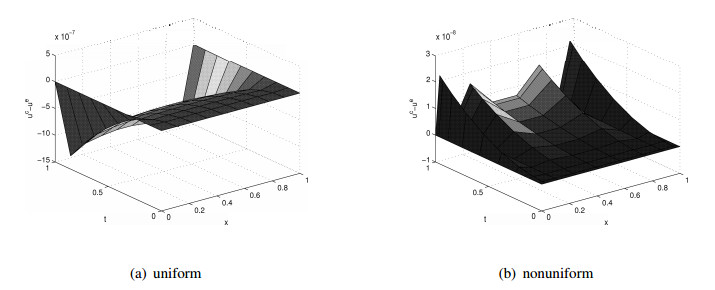









 DownLoad:
DownLoad:



